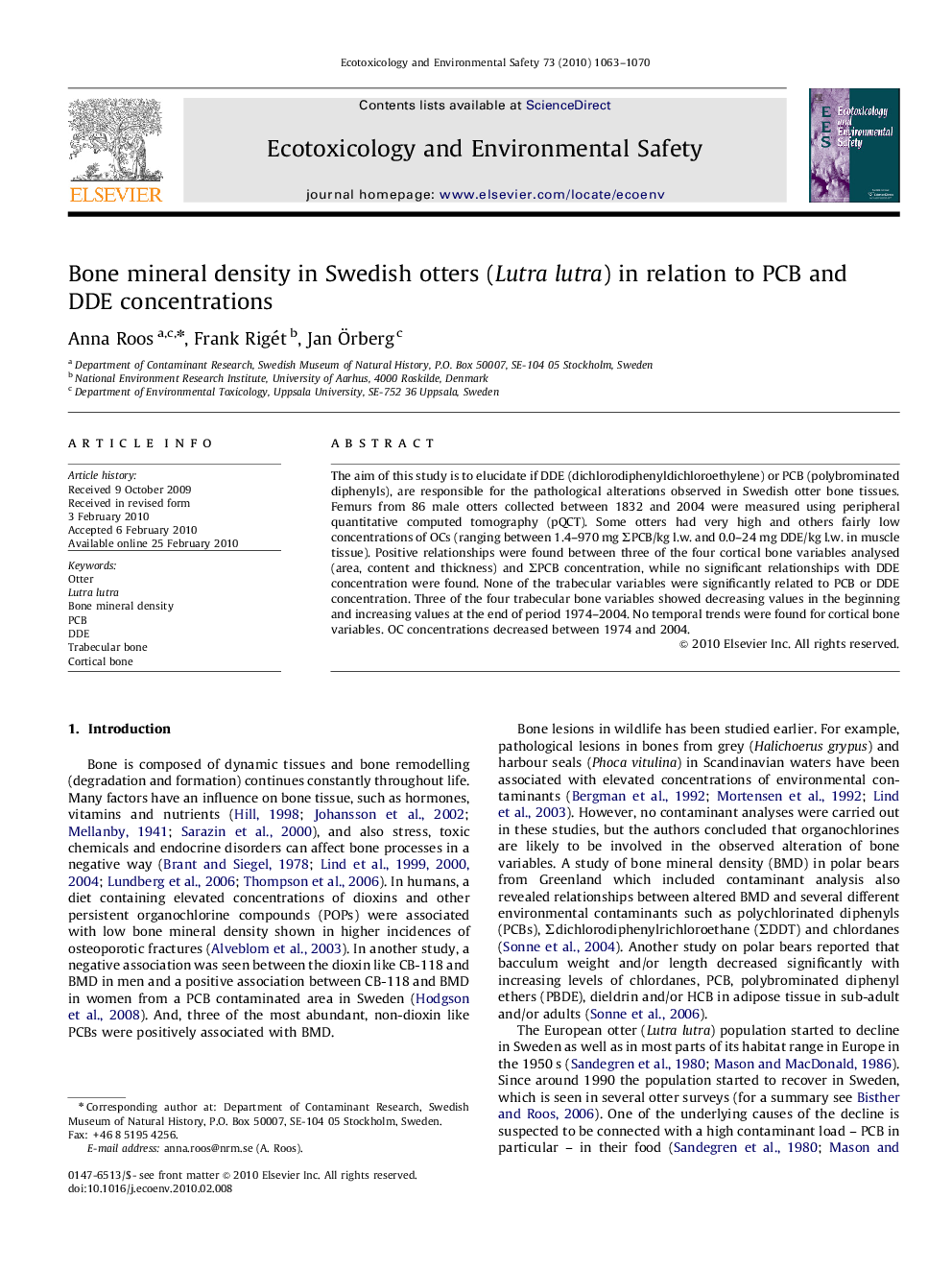| Article ID | Journal | Published Year | Pages | File Type |
|---|---|---|---|---|
| 4421689 | Ecotoxicology and Environmental Safety | 2010 | 8 Pages |
The aim of this study is to elucidate if DDE (dichlorodiphenyldichloroethylene) or PCB (polybrominated diphenyls), are responsible for the pathological alterations observed in Swedish otter bone tissues. Femurs from 86 male otters collected between 1832 and 2004 were measured using peripheral quantitative computed tomography (pQCT). Some otters had very high and others fairly low concentrations of OCs (ranging between 1.4–970 mg ΣPCB/kg l.w. and 0.0–24 mg DDE/kg l.w. in muscle tissue). Positive relationships were found between three of the four cortical bone variables analysed (area, content and thickness) and ΣPCB concentration, while no significant relationships with DDE concentration were found. None of the trabecular variables were significantly related to PCB or DDE concentration. Three of the four trabecular bone variables showed decreasing values in the beginning and increasing values at the end of period 1974–2004. No temporal trends were found for cortical bone variables. OC concentrations decreased between 1974 and 2004.
